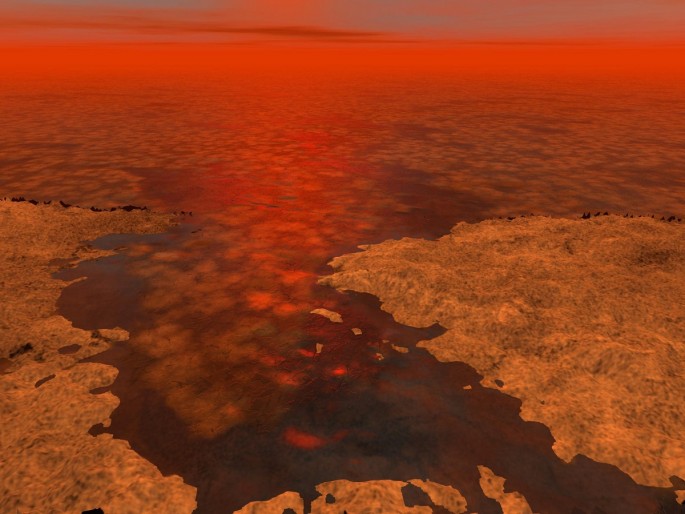Titan, the biggest of Saturn's moons possesses the same conditions that have led to the creation of sinkholes on the earth's surface, new data compiled from research by NASA and the European Space Agency has revealed.
The scientific community has always been intrigued by the deep depressions formed on the Titan's surface that led to the formation of lakes and seas there. Researchers have drawn parallel to the way caves and sinkholes have formed on earth with the basic principle remaining the same, claimed The Hindu.
Just as water have eaten into the surface material like gypsum or limestone on earth's crust leading to the formation of sinkholes, the liquid hydrocarbon deposits like methane and ethane on Titan's surface is believed to be dissolving the solid organic deposits there.
Scientists however have claimed the erosion process underway on Titan's surface to be much slower than prevalent on earth, which is estimated to be some 30 times slower compared to earth, NDTV reported.
"We found that the dissolution process occurs on Titan some 30 times slower than on Earth due to the longer length of Titan's year and the fact it only rains during Titan summer. Nonetheless, we believe that dissolution is a major cause of landscape evolution on Titan and could be the origin of its lakes," said Thomas Cornet of the European Space Agency.
It will be interesting to note that Titan is the only other celestial body in the solar system to possess seas and lakes like that of the earth. However, the lakes there is unlike those found on earth as its formed of hydrocarbons like methane and ethane which is maintained in liquid form owing to the extreme cold temperate prevalent on the Titan's surface.



























